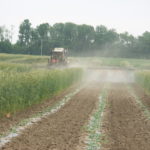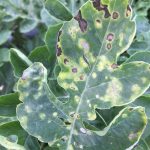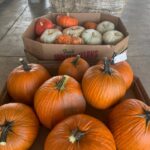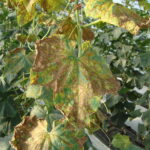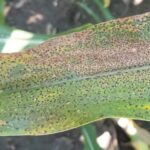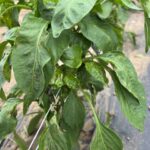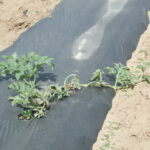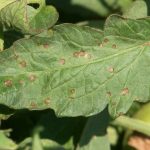Here are 10 suggestions to help keep your vegetable crop healthy. Get plant problems accurately diagnosed. Before deciding on a control measure, are you sure you know what the problem is? The optimum control of downy mildew on cucumbers, for example, requires specialized fungicides. On the other hand, no amount of fungicide will control[Read More…]
Now is a good time to discuss resources that might be used to help solve vegetable disease problems. This article will discuss online resources that may be useful for vegetable disease management. Let’s start with my favorite resource: the Plant and Pest Diagnostic Laboratory. While it isn’t necessary to send in a sample to the[Read More…]
The Environmental Protection Agency (EPA) has published a “proposed Interim Review Decision” regarding the fungicide chlorothalonil. I only recently became aware of this review. Unfortunately, the deadline to comment is January 10, 2024. A link to comment is provided at the bottom of this article. Read on for more details. Chlorothalonil is the common name[Read More…]
For most pumpkin growers, it is too late to take any corrective action against diseases for the 2023 crop. However, it might be wise to determine what disease problems were present during the 2023 season. This article will discuss two relatively unusual virus diseases of pumpkin. Recently, I visited several pumpkin fields in northern Indiana.[Read More…]
Downy mildew has been observed in Adam County in northern Indiana on cucumber. In addition, downy mildew on cucumber has been reported in southern Michigan and northern Ohio. Growers in northern Indiana should manage for downy mildew on valuable cucurbit crops. Growers throughout the state should scout for the disease. Growers should assume that all[Read More…]
This disease is a relatively new disease to Indiana. So far, it has mostly affected field corn. However, tar spot was recently observed on sweet corn. This article will discuss the symptoms, biology and management of tar spot of sweet corn. Tar spot causes dark, mostly circular lesions on the leaves, stalks and husks of[Read More…]
The first symptom of bacterial spot of pepper that is usually noticed is the lesions on the leaves. These lesions are irregular to round in shape and brown and are associated with chlorosis. Lesions are usually water-soaked (Figure 1). In severe cases, the fruit may be affected. The lesions on fruit are often raised (Figure[Read More…]
Fusarium wilt of watermelon is one of the most economically important diseases of watermelon in the Midwest. Fusarium wilt typically shows up in watermelon fields just after Memorial Day. This year is no different. After a brief description of the symptoms of the disease, this article will discuss the pluses and minuses of possible fungicide[Read More…]
As I write this, scattered showers are moving through much of southern Indiana. It is unclear yet how much moisture these showers will produce for any given area. What is clear is that May and June have been unusually dry for most of Indiana. How will this dry spell affect overall disease pressure for the[Read More…]
There are a number of factors that go into scheduling foliar fungicide applications. For example, choosing a product with your crop and suspected disease on the label is a must. You will want to select a product with good efficacy. It is important to choose a product with a Pre-Harvest Interval (PHI) and Re-Entry Interval[Read More…]

